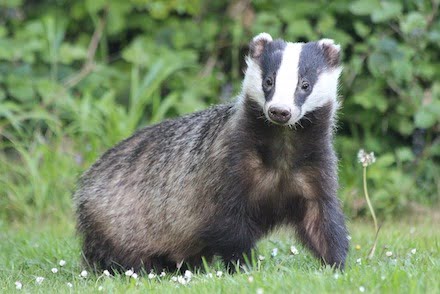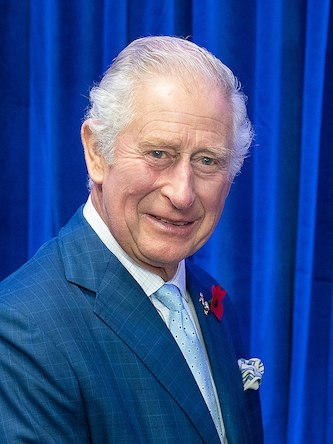A man in Surrey, England, has found a unique way to repel foxes and badgers from his garden. James Milward connected his home cameras to a device that emits high frequency sounds, which he trained to trigger when it spotted the nocturnal animals. The system, which he calls the Furbinator 3000, has successfully kept his garden clean. However, teaching the camera system to recognize the animals was not easy. Initially, it mistook a badger for an umbrella and then a sink or a bear. But after using machine learning, the device finally worked as intended.
While Milward’s invention has been effective, ultrasonic animal deterrents like his have faced controversy. The RSPCA has objected to them, stating that the noise levels can cause discomfort, fear, and pain to animals. Milward acknowledges the importance of living harmoniously with wildlife but wanted a humane way to protect his children and garden. He believes his technology could have broader applications, particularly in agricultural settings where there are no safe deterrents for potential predators.
Milward has made the code he used to program his camera open source, allowing others to use it. He is not seeking to profit from the Furbinator and hopes that it can be a solution for conflicts between humans and animals in various settings. However, while his invention has gained attention, his wife is still perplexed by his pet project. Despite this, Milward is determined to solve what seems like a simple problem in his own unique way.
Original news source: Man trains home cameras to help repel badgers and foxes (BBC)
Listen
Slow
Normal
Fast
Group or Classroom Activities
Warm-up Activities:
– News Summary
Instructions: Divide the students into pairs or small groups. Have each group read the article together and then summarize the main points in a brief news summary. They should focus on the key information and present their summaries to the class.
– Opinion Poll
Instructions: Have the students form pairs or small groups. Give each group a list of questions related to the article, such as “Do you think using high frequency sounds to repel animals is an effective solution?” or “Should ultrasonic animal deterrents be banned?” Have the groups discuss and debate the questions, and then conduct an opinion poll within their group to determine their collective opinion on each question.
– Sketch It
Instructions: Divide the students into pairs. Have one student describe a scene from the article to their partner, who must then sketch it based on the description. Afterward, the students can compare their sketches and discuss any differences or similarities. This activity encourages listening comprehension and descriptive skills.
– Vocabulary Pictionary
Instructions: Write a list of vocabulary words from the article on the board. Divide the students into small groups. Assign each group a word from the list and have them take turns drawing pictures that represent the word, while the other group members try to guess the word. This activity reinforces vocabulary retention and encourages creativity.
– Future Predictions
Instructions: In small groups, have the students discuss and make predictions about the future of animal deterrent technology. They should consider the potential benefits and drawbacks, as well as any ethical or environmental concerns. Afterward, each group can present their predictions to the class and engage in a class-wide discussion on the topic.
Comprehension Questions:
1. What is the purpose of James Milward’s invention?
2. Why did it take some time for the camera system to recognize the animals?
3. What concerns does the RSPCA have about ultrasonic animal deterrents?
4. Why did James Milward make the code he used open source?
5. How does James Milward hope his invention can be used in the future?
6. How does James Milward’s wife feel about his invention?
7. Why did James Milward want a humane way to protect his children and garden?
8. What challenges did James Milward face in developing his invention?
Go to answers ⇩
Listen and Fill in the Gaps:
A man in Surrey, England, has (1)______ a unique way to repel foxes and badgers from his (2)______. James Milward connected his home (3)______ to a device that emits high frequency sounds, which he trained to trigger when it spotted the nocturnal (4)______. The system, which he calls the Furbinator 3000, has successfully kept his garden clean. However, teaching the camera system to recognize the animals was not easy. Initially, it mistook a (5)______ for an umbrella and then a sink or a bear. But after using machine learning, the device finally worked as intended.
While Milward’s invention has been effective, (6)______ animal deterrents like his have (7)______ controversy. The RSPCA has objected to them, stating that the noise levels can (8)______ discomfort, fear, and pain to animals. (9)______ acknowledges the importance of living harmoniously with (10)______ but wanted a humane way to protect his children and garden. He believes his technology could have broader (11)______, particularly in agricultural settings where there are no safe deterrents for potential (12)______.
Milward has made the code he used to program his camera open source, (13)______ others to use it. He is not seeking to profit from the Furbinator and hopes that it can be a solution for conflicts between (14)______ and animals in (15)______ settings. However, while his invention has gained attention, his wife is still perplexed by his pet project. Despite this, Milward is determined to solve what seems like a (16)______ problem in his own unique way.
Go to answers ⇩
Discussion Questions:
Students can ask a partner these questions, or discuss them as a group.
1. What is the Furbinator 3000 and how does it work?
2. How would you feel if you had nocturnal animals causing problems in your garden?
3. Do you think it is important to find humane ways to repel animals from gardens? Why or why not?
4. Have you ever had a problem with wildlife in your garden? How did you handle it?
5. What do you think about the RSPCA’s objection to ultrasonic animal deterrents?
6. Do you think it is necessary to find safe deterrents for potential predators in agricultural settings? Why or why not?
7. Would you be interested in using a device like the Furbinator 3000 to protect your garden? Why or why not?
8. How do you think machine learning can be useful in solving problems like repelling animals from gardens?
9. What other conflicts do you think can arise between humans and animals in various settings?
10. Do you think open sourcing the code for the Furbinator 3000 was a good idea? Why or why not?
11. How do you think the Furbinator 3000 could be improved or modified for different purposes?
12. Would you be willing to try programming a device like the Furbinator 3000 yourself? Why or why not?
13. What do you think about James Milward’s determination to solve the problem in his own unique way, despite his wife’s confusion?
14. Have you ever had a pet project or invention that others didn’t understand? How did you handle it?
15. Do you think it is important to find innovative solutions to everyday problems? Why or why not?
Individual Activities
Vocabulary Meanings:
Match each word to its meaning.
Words:
1. repel
2. trigger
3. mistook
4. discomfort
5. harmoniously
6. profit
7. conflicts
8. perplexed
Meanings:
(a) Confused or puzzled
(b) Disagreements or disputes
(c) To make money or gain financial benefit
(d) A feeling of unease or pain
(e) To cause something to happen or start
(f) To misunderstand or confuse
(g) To drive away or keep away
(h) In a peaceful and cooperative way
Go to answers ⇩
Multiple Choice Questions:
1. What did James Milward connect his home cameras to?
(a) A device that emits low frequency sounds
(b) A device that emits light
(c) A device that emits a foul smell
(d) A device that emits high frequency sounds
2. What is the name of the device that James Milward created?
(a) The Animal Repeller 500
(b) The Garden Protector
(c) The Wildlife Deterrent
(d) The Furbinator 3000
3. How did James Milward train the device to recognize the nocturnal animals?
(a) Using a manual process
(b) Using machine learning
(c) Using a pre-programmed algorithm
(d) Using a remote control
4. What did the camera system initially mistake a badger for?
(a) A sink
(b) A bear
(c) An umbrella
(d) A tree
5. Why has the RSPCA objected to ultrasonic animal deterrents like the Furbinator 3000?
(a) They are ineffective in repelling animals
(b) They are too expensive to implement
(c) They can cause discomfort, fear, and pain to animals
(d) They are harmful to the environment
6. What does James Milward believe his technology could be useful for?
(a) Protecting children and gardens
(b) Repelling insects from crops
(c) Preventing burglaries
(d) Monitoring wildlife populations
7. What did James Milward do with the code he used to program his camera?
(a) Patented it for his own profit
(b) Made it open source
(c) Sold it to a technology company
(d) Kept it a secret
8. How does James Milward’s wife feel about his invention?
(a) Perplexed
(b) Excited
(c) Supportive
(d) Indifferent
Go to answers ⇩
True or False Questions:
1. The man doubts his technology could have broader applications, particularly in agricultural settings.
2. The device is called the Furbinator 2000.
3. Initially, the camera system mistook a badger for an umbrella and then a sink or a bear.
4. The man has made the code he used to program his camera open source, allowing others to use it.
5. Ultrasonic animal deterrents like the Furbinator have faced controversy due to noise levels causing discomfort, fear, and pain to animals.
6. The man disconnected his home cameras from a device that emits high frequency sounds.
7. The device failed as intended after using machine learning.
8. A man in Surrey, England, has found a unique way to repel foxes and badgers from his garden.
Go to answers ⇩
Write a Summary:
Write a summary of this news article in two sentences.
Check your writing now with the best free AI for English writing!
Writing Questions:
Answer the following questions. Write as much as you can for each answer.
Check your answers with our free English writing assistant!
1. How does James Milward repel foxes and badgers from his garden?
2. What challenges did Milward face when training his camera system to recognize the nocturnal animals?
3. Why has the RSPCA objected to ultrasonic animal deterrents like the Furbinator 3000?
4. What does Milward hope to achieve by making the code for his camera system open source?
5. How does Milward’s wife feel about his invention?
Answers
Comprehension Question Answers:
1. The purpose of James Milward’s invention is to repel foxes and badgers from his garden.
2. It took some time for the camera system to recognize the animals because initially, it mistook them for other objects like an umbrella, a sink, or a bear.
3. The RSPCA has concerns that ultrasonic animal deterrents can cause discomfort, fear, and pain to animals due to the high noise levels.
4. James Milward made the code he used open source to allow others to use it and find solutions for conflicts between humans and animals in different settings.
5. James Milward hopes his invention can be used in the future for broader applications, particularly in agricultural settings where there are no safe deterrents for potential predators.
6. James Milward’s wife is still perplexed by his invention.
7. James Milward wanted a humane way to protect his children and garden because he wanted to live harmoniously with wildlife while ensuring their safety.
8. James Milward faced challenges in developing his invention, such as teaching the camera system to recognize the animals and addressing concerns about the effects of ultrasonic animal deterrents.
Go back to questions ⇧
Listen and Fill in the Gaps Answers:
(1) found
(2) garden
(3) cameras
(4) animals
(5) badger
(6) ultrasonic
(7) faced
(8) cause
(9) Milward
(10) wildlife
(11) applications
(12) predators
(13) allowing
(14) humans
(15) various
(16) simple
Go back to questions ⇧
Vocabulary Meanings Answers:
1. repel
Answer: (g) To drive away or keep away
2. trigger
Answer: (e) To cause something to happen or start
3. mistook
Answer: (f) To misunderstand or confuse
4. discomfort
Answer: (d) A feeling of unease or pain
5. harmoniously
Answer: (h) In a peaceful and cooperative way
6. profit
Answer: (c) To make money or gain financial benefit
7. conflicts
Answer: (b) Disagreements or disputes
8. perplexed
Answer: (a) Confused or puzzled
Go back to questions ⇧
Multiple Choice Answers:
1. What did James Milward connect his home cameras to?
Answer: (d) A device that emits high frequency sounds
2. What is the name of the device that James Milward created?
Answer: (d) The Furbinator 3000
3. How did James Milward train the device to recognize the nocturnal animals?
Answer: (b) Using machine learning
4. What did the camera system initially mistake a badger for?
Answer: (c) An umbrella
5. Why has the RSPCA objected to ultrasonic animal deterrents like the Furbinator 3000?
Answer: (c) They can cause discomfort, fear, and pain to animals
6. What does James Milward believe his technology could be useful for?
Answer: (a) Protecting children and gardens
7. What did James Milward do with the code he used to program his camera?
Answer: (b) Made it open source
8. How does James Milward’s wife feel about his invention?
Answer: (a) Perplexed
Go back to questions ⇧
True or False Answers:
1. The man doubts his technology could have broader applications, particularly in agricultural settings. (Answer: False)
2. The device is called the Furbinator 2000. (Answer: False)
3. Initially, the camera system mistook a badger for an umbrella and then a sink or a bear. (Answer: True)
4. The man has made the code he used to program his camera open source, allowing others to use it. (Answer: True)
5. Ultrasonic animal deterrents like the Furbinator have faced controversy due to noise levels causing discomfort, fear, and pain to animals. (Answer: True)
6. The man disconnected his home cameras from a device that emits high frequency sounds. (Answer: False)
7. The device failed as intended after using machine learning. (Answer: False)
8. A man in Surrey, England, has found a unique way to repel foxes and badgers from his garden. (Answer: True)
Go back to questions ⇧













